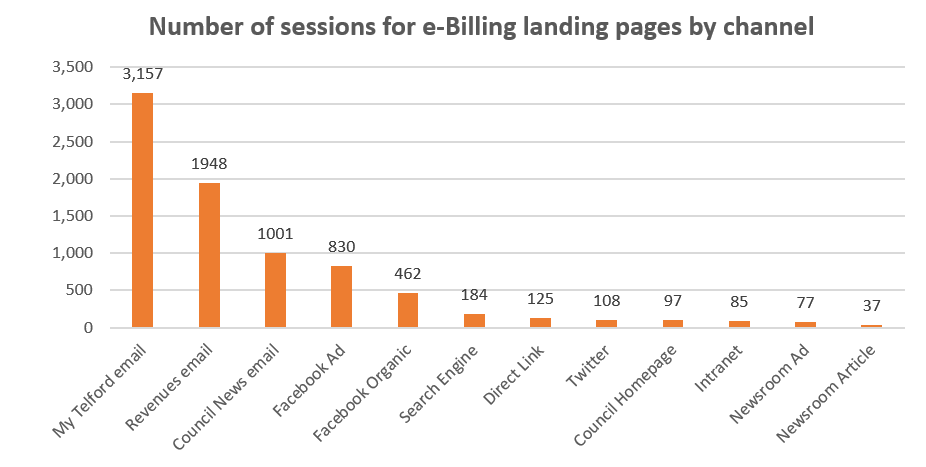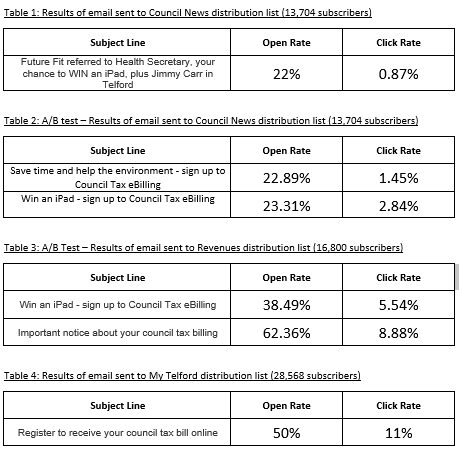

What makes an email campaign successful? There are so many things that contribute however, one of the most impactful things is exceptional campaign management within the team. If we then combine this with closely targeted subscribers who are understood by the organisation , a consistency in the communication and measurable outcomes then we are certainly working towards the email campaign dream.
Telford & Wrekin Council have been a client for many years now and more recently we have had lot’s of discussions around using email to drive behaviour change, save money and ultimately raise awareness of online services to avoid unnecessary and expensive contact. So when Tom Cox their Communications Officer got in touch with me to let me know how their recent eBilling campaign had worked I was absolutely thrilled and proud as punch!
So, all council tax payers who provided an email were uploaded (in a GDPR compliant way) into govDelivery (our email platform) and sent a series of messages encouraging them to switch to receiving their bills online. Sounds simple right? Well, often the most successful campaigns come from the simplest of ideas however, throw in some A/B testing of the emails and segmentation of the audience and well … see the results for yourself:

Tom Cox, Communications Officer said:
When a specific online action is required, email has proved to be the most effective method to achieve this and services should be allocating resources to this channel.
Each time an email was sent the open rates and click rates improved as they changed the subject line. On one occasion they also changed the content. As the campaign went on, open and click rates improved every time.

Each distribution list received the email a second time if they did not open or click the original email with the “winning” subject line from the A/B test.
The email in table 1 was a “newsletter” and so featured several stories other than eBilling. The click rate in table 1 only applies to the link for eBilling landing page, not the whole email. When comparing table 1 and 2 we can see that the click rate for a story will improve when the story sits on its own, and not part of a “newsletter.”
A lot of effort went into securing the My Telford email database. This database is not owned by the communications team and very careful considerations and reassurances had to be made before it could be used but it absolutely paid off. This database is a self-identified group of people that have previously transacted with the council online. It therefore made sense that open and click rates were among the highest for this audience.
We would like to say a huge thank you and congratulations to Tom Cox and the rest of the team at Telford & Wrekin – excellent campaign, excellent management and great outcomes.